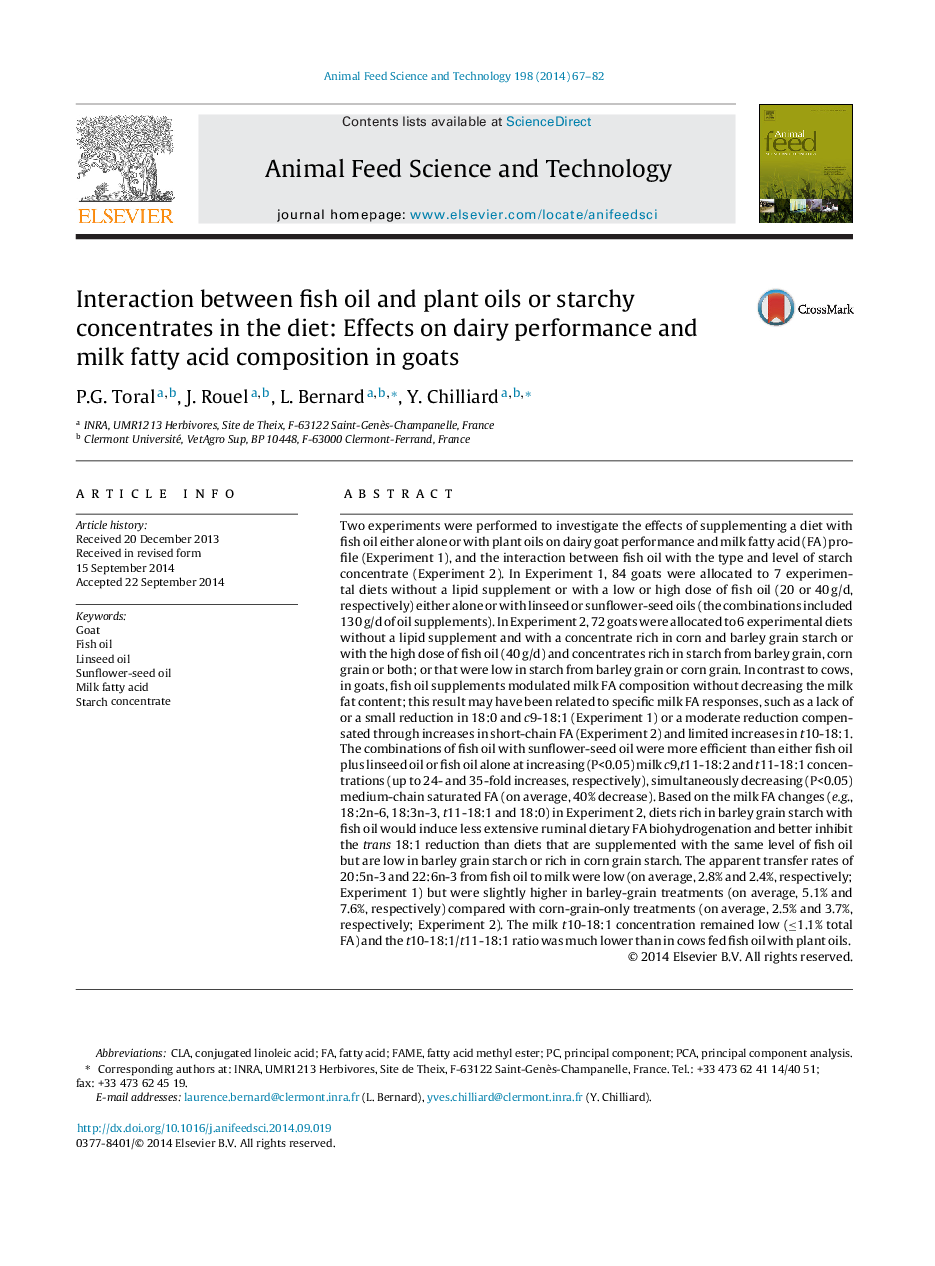| Article ID | Journal | Published Year | Pages | File Type |
|---|---|---|---|---|
| 8491471 | Animal Feed Science and Technology | 2014 | 16 Pages |
Abstract
Two experiments were performed to investigate the effects of supplementing a diet with fish oil either alone or with plant oils on dairy goat performance and milk fatty acid (FA) profile (Experiment 1), and the interaction between fish oil with the type and level of starch concentrate (Experiment 2). In Experiment 1, 84 goats were allocated to 7 experimental diets without a lipid supplement or with a low or high dose of fish oil (20 or 40 g/d, respectively) either alone or with linseed or sunflower-seed oils (the combinations included 130 g/d of oil supplements). In Experiment 2, 72 goats were allocated to 6 experimental diets without a lipid supplement and with a concentrate rich in corn and barley grain starch or with the high dose of fish oil (40 g/d) and concentrates rich in starch from barley grain, corn grain or both; or that were low in starch from barley grain or corn grain. In contrast to cows, in goats, fish oil supplements modulated milk FA composition without decreasing the milk fat content; this result may have been related to specific milk FA responses, such as a lack of or a small reduction in 18:0 and c9-18:1 (Experiment 1) or a moderate reduction compensated through increases in short-chain FA (Experiment 2) and limited increases in t10-18:1. The combinations of fish oil with sunflower-seed oil were more efficient than either fish oil plus linseed oil or fish oil alone at increasing (P<0.05) milk c9,t11-18:2 and t11-18:1 concentrations (up to 24- and 35-fold increases, respectively), simultaneously decreasing (P<0.05) medium-chain saturated FA (on average, 40% decrease). Based on the milk FA changes (e.g., 18:2n-6, 18:3n-3, t11-18:1 and 18:0) in Experiment 2, diets rich in barley grain starch with fish oil would induce less extensive ruminal dietary FA biohydrogenation and better inhibit the trans 18:1 reduction than diets that are supplemented with the same level of fish oil but are low in barley grain starch or rich in corn grain starch. The apparent transfer rates of 20:5n-3 and 22:6n-3 from fish oil to milk were low (on average, 2.8% and 2.4%, respectively; Experiment 1) but were slightly higher in barley-grain treatments (on average, 5.1% and 7.6%, respectively) compared with corn-grain-only treatments (on average, 2.5% and 3.7%, respectively; Experiment 2). The milk t10-18:1 concentration remained low (â¤1.1% total FA) and the t10-18:1/t11-18:1 ratio was much lower than in cows fed fish oil with plant oils.
Keywords
Related Topics
Life Sciences
Agricultural and Biological Sciences
Animal Science and Zoology
Authors
P.G. Toral, J. Rouel, L. Bernard, Y. Chilliard,
